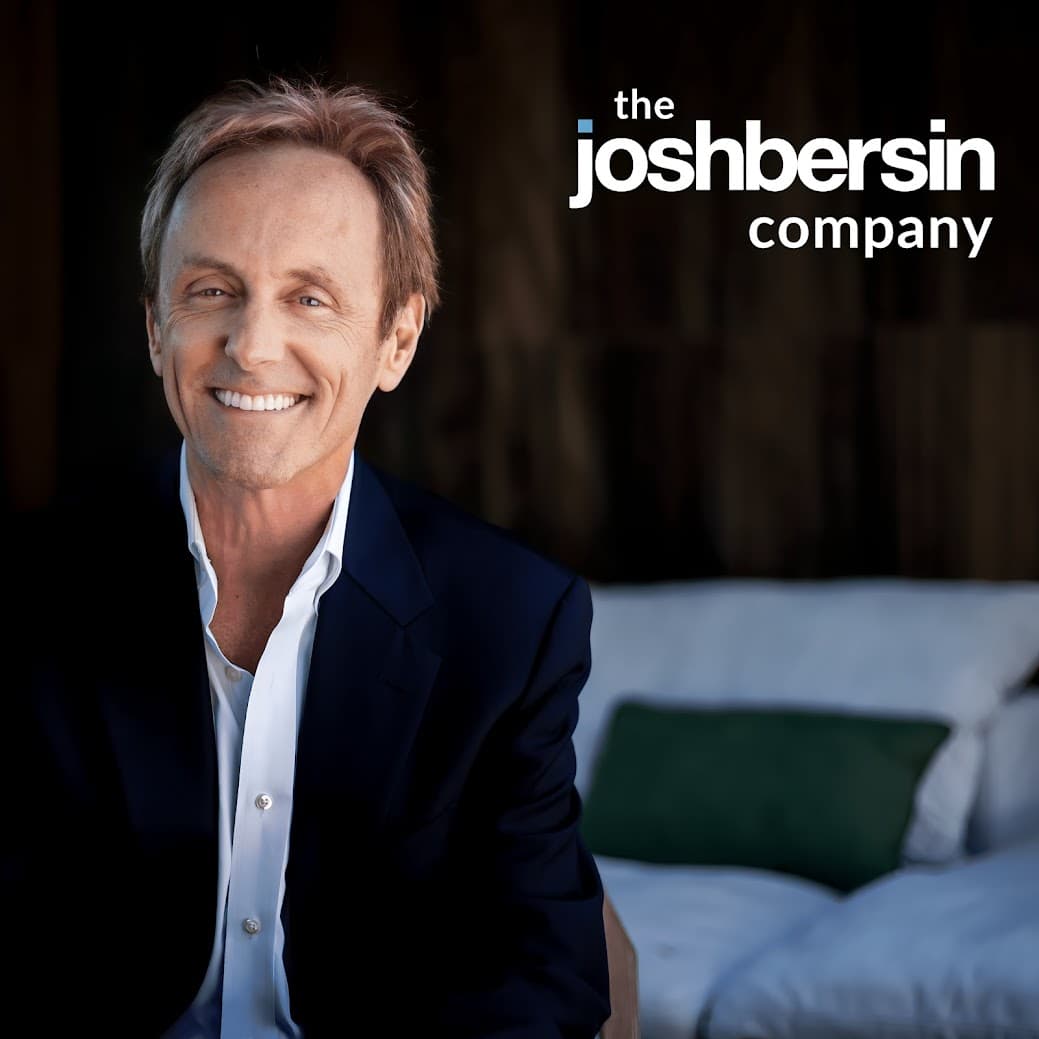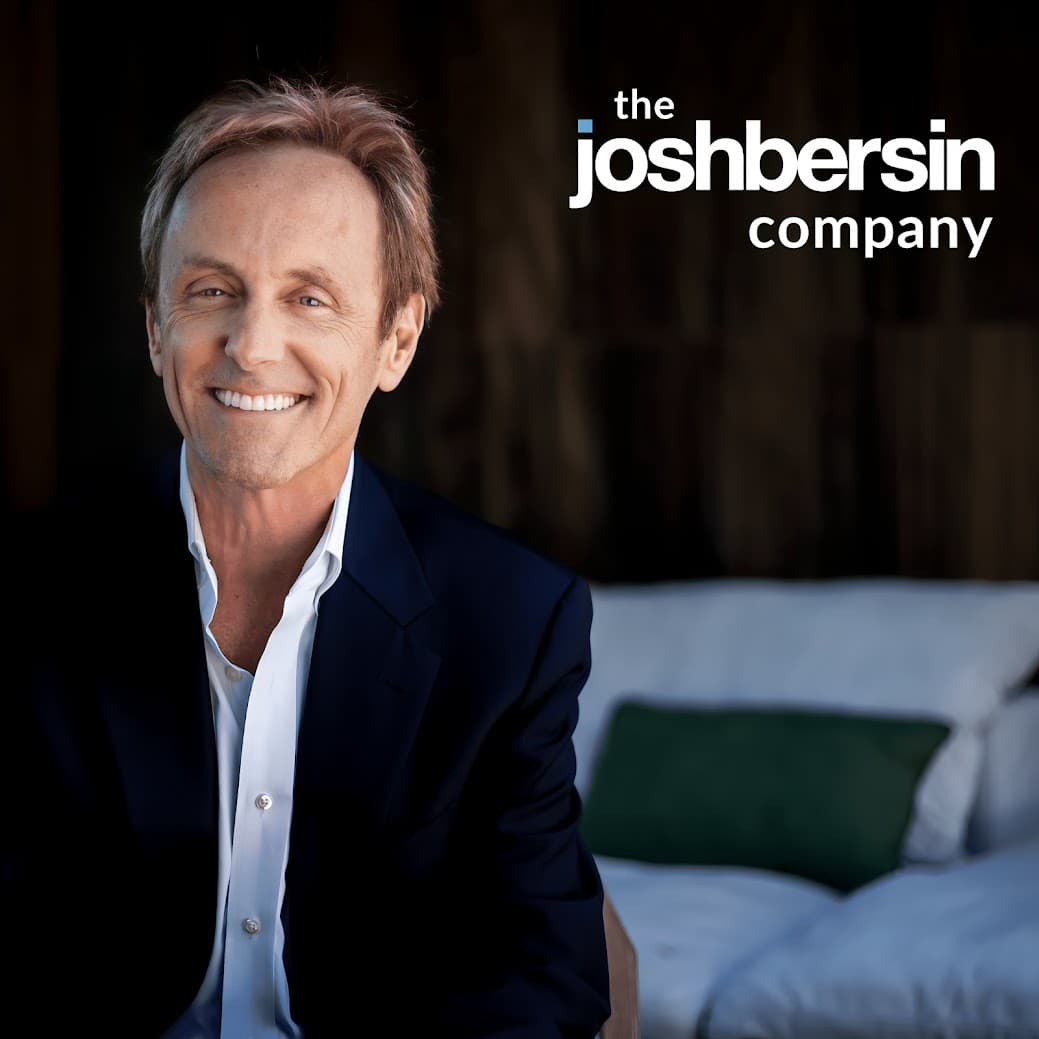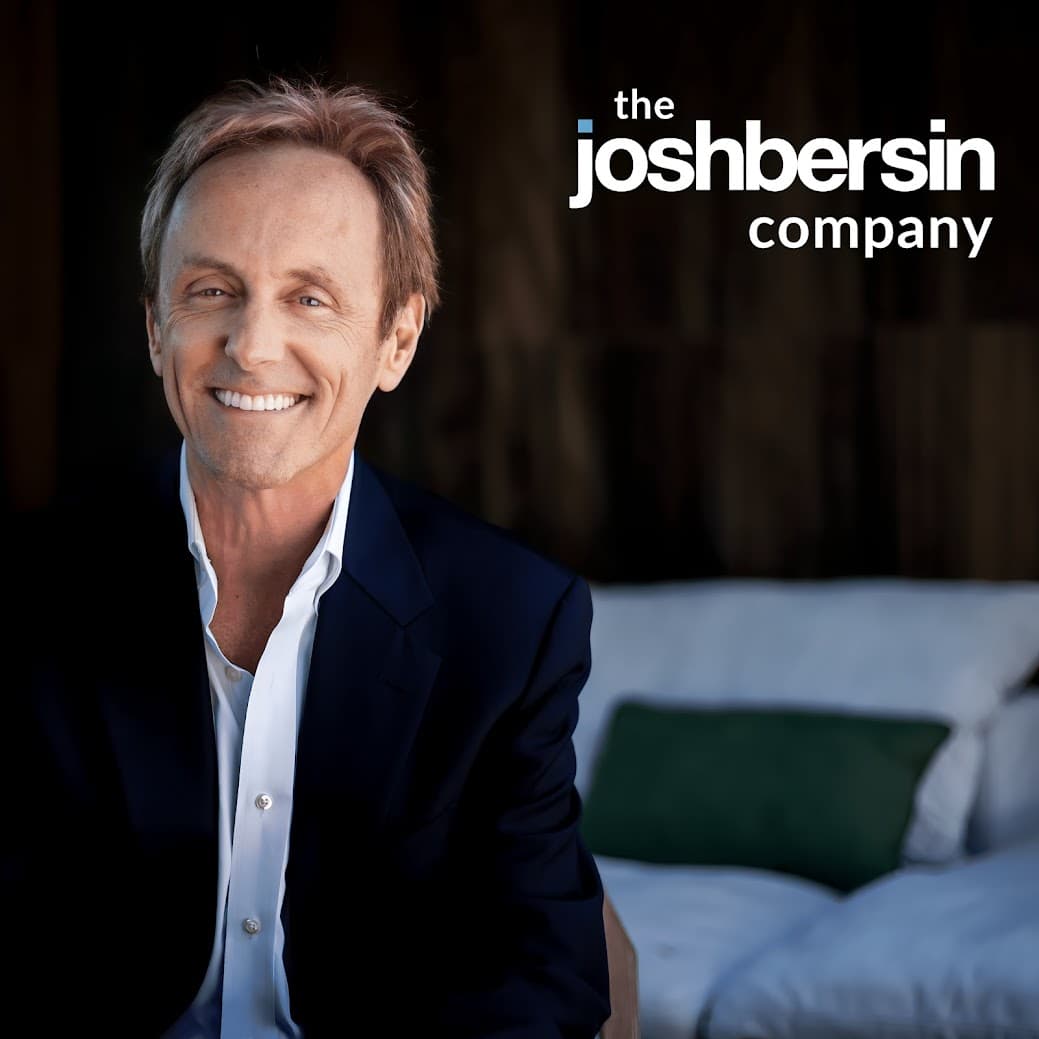Episode Transcript
Speaker 1 00:00:09 Hey everyone. Today I'm gonna talk about some really exciting research we're launching called the Healthy Organization, which is the next step in employee wellbeing. This has been something Janet Merton's and I and others have been working on for over a year here, and it's a significant effort designed to give you a sense of where the wellbeing market is going and what you should be doing. The history of this goes way, way, way back to the 17 hundreds and 18 hundreds when companies started to build employee housing and benefits programs to allow employees to live healthily and to stay safe during the plague. Actually, the Cadbury city and factories, which are now part of Unilever in the UK were designed for this, and that's the first evidence I have of a wellbeing program. But of course, since then there have been thousands of things companies have done.
Speaker 1 00:00:57 I visited companies that have employee health centers in their offices, mental health programs, exercise programs, gyms, yoga classes, and then over the last maybe 15 years that we've all been digitized, lots and lots of digital tools and solutions. When I was at Deloitte around 2015, 2016, I wrote an article called The Overwhelmed Employee, which was one of the most popular things I wrote at the time. And it was a discussion of how the relentless always on iPhone, Twitter, email, culture at work was really cheering people over the limit. As you remember back then, people weren't getting enough sleep, they were feeling stressed about all the distractions. We needed mindfulness programs and yoga just to focus on work. And we really had to reteach ourselves and our leaders how to operate in a digital work experience. And there was a lot of issue back then on mental health and resilience far before the pandemic.
Speaker 1 00:01:55 And it gave birth to this enormously inventive group of tech companies who built apps and training and financial wellbeing and realtime pay and education and connectivity, and now online coaching to support this, all of which was designed initially to be part of the benefits program. And you know, the wellbeing space did come out of compensation and benefits. Today, believe it or not, 32% of wages in the United States are spent on non-cash benefits, insurance programs, vacation, wellbeing, health. It's a huge number. It's trillions of dollars. We don't have national healthcare in the United States. So employers cover some of that. And most companies don't know what they're getting for it. They know they need it, they know that it's a recruiting tool, they know that it's a retention tool. They know that it's an absenteeism and and insurance reduction tool, but they don't really know the ROI of all these things.
Speaker 1 00:02:48 I talked to the head of wellbeing at a lot of companies, and most companies have 50, 60, 70 of these things. Deloitte at over a hundred. Salesforce has more than 120. And if you ask the benefits managers, which ones are paying off, it's hard for them to tell because they're all being used by somebody and they're all being used to attract employees too. So the corporate wellbeing space, which alone is a 60 billion market, is crowded, confusing, and probably ahead of itself. There is no question that these programs add value, but are they really put into the right context? We discovered during the last two years of the pandemic, as this research points out that we have to move beyond this. And here's what we did in this research. Our hypothesis as we started this research was that all these wellbeing programs were great, but of limited value for strategic reasons.
Speaker 1 00:03:41 Because as we know from our employee experience, research management, leadership, job design, pay benefits, diversity, inclusion, they all contribute to this sense of wellbeing and energy and productivity at work. So this all going, what we essentially discovered, as you'll see in the framework, is there's really four levels of investment and wellbeing. The first level is what we call employee safety. When I worked at Exxon in the 1970s, 1980s, you had to wear Nomex coveralls, you had to have a hard hat, you had to wear goggles. There were some rules to keep you safe. And safety in oil refineries, in chemical plants, in a lot of manufacturing companies, in cement companies, in construction companies is number one. If people aren't safe, they're not gonna come to work to say nothing of the legal liabilities the company has. So employee safety is the first thing that goes for the pandemic too.
Speaker 1 00:04:33 If you're gonna get the virus or get sick, you're not gonna come to the office and you're not gonna recommend your company as a place to work. So many companies take this very, very seriously. The Exxon, they have a safety minute at the beginning of every meeting. In fact, when I worked there, you weren't allowed to skip steps going down the stairs because that was considered to be unsafe. You had to go back and come back down the stairs again, <laugh>, it's funny, but it was true. That's level one. And you'll see from our research that about 30 or 35% of companies take that level very seriously. Level two is what we call employee wellbeing, where we move beyond the levels of safety up Maslow's hierarchy. By the way, the bottom of Maslow's hierarchy is safety. If you don't feel safe, you don't feel empowered to do anything.
Speaker 1 00:05:17 And we look at wellbeing and that gets to the issues of financial wellbeing, sleep, rest, energy, fitness, diet, mental wellbeing, behavioral health, all of those things that may in fact be solutions to problems or ways to give yourself more resilience and energy at work. And there's no limit to the number of those available today. It's a very vibrant market. And we did have, in the early part of this decade, a real fad that opened up for fitness and health, health clubs, gyms. I think Instagram sort of started all this cuz everybody wanted to look good. This is the employee's version of that. And companies have gone well beyond benefits to create wellbeing ambassadors, wellbeing consultants and global programs focus on wellbeing in different countries. You know at Workday they have local wellbeing ambassadors that have different programs in each facility. At JP Morgan Chase, they have the same thing.
Speaker 1 00:06:13 And you can measure wellbeing through tools like Viva Insights to see if people are spending enough time on personal and non meeting times focusing at work. And it goes on and on and on. But do you get an ROI from that? Of course you get some, but not enough. And here's the example I want to give you. Uh, Janet and I have talked to a lot of companies about this and they've said, well, you know, their employees are happy to have all these benefits, but they still don't know if the employer cares. I had a fascinating conversation with the CHRO of one of the largest healthcare providers in Idaho last week, and they're really stressed by covid. People are working 60 hours a week, the patients are very unhappy about having to wear masks. There's all sorts of political issues. And she said, look, we got all sorts of stuff.
Speaker 1 00:06:57 We have nap rooms, we have vacation time, we have benefits, psychological health programs, but nobody uses it because they're too busy. So we have to figure out ways to give people more time and space at work to take advantage of the things we're giving them to make their work easier. And that leads to level three, which is not just employee wellbeing, but healthy work, making sure that the workplace, the work goals, the work environment, the workspace is healthy. A good example of this, if you think about a truck driver, level one would be the truck is safe and the tires aren't gonna be balded and it's not gonna break down. Level two is the seats are comfortable, you have enough exercise, you're getting enough sleep, the truck has adequate ventilation and you don't get burned from the sun when the sun's beating down on your left arm all day.
Speaker 1 00:07:46 Level three would be the schedules are flexible enough that you're not driving 90 miles an hour to get to the next location and doing unsafe things for you or the company or the customers because of the workload. Work design is a critical part of wellbeing and health and management practices are as well. One of the things that's come up repeatedly during the pandemic in every conversation we've had is people saying, we're overwhelmed, we're exhausted, we're tired, we're working too many hours. Well, whose fault is that? That has nothing to do with the benefits programs. That's management. That's management, asking people to do too much, not giving people enough clarity of what's important and what's not important and not taking a break. So those issues of job design and work design, which we talk about in the irresistible model, including goal setting and management feedback are part of level three.
Speaker 1 00:08:38 Level four is what we call the healthy organization. And this is where your wellbeing program deals with issues like growth recognition, a sense of employee empowerment, a focus on the company's mission and purpose. And the truck driver says to himself, not only do I like driving this truck, but I like the company, I like my boss, I'm getting paid fairly, I'm about to get promoted. I could move into a management role. I see other opportunities here. I'm kind of excited about some of the new initiatives the company's doing. I like our customers. I mean, this is what a healthy organization feels like. I mean, I've worked for some healthy organizations at different points in time and everything just feels like it works. And that often results in or comes from a highly profitable business. It's hard to operate in a healthy way when you're losing market share, losing money or getting beaten by competition.
Speaker 1 00:09:35 But let me warn you that that doesn't mean you shouldn't be a healthy organization. What we found in the research is that only about 15% of the companies we surveyed reached level four. By the way, there were more than 80 or 90 disciplines involved in this research. And you can take the assessment yourself. We have a scorecard version of the assessment. We will offer to you as an organization or as an individual. You can see where you stack up. And the companies at level four, they're only 15%. So of the four or 500 companies that have participated in this, a lot of them are not at level four. Now, I'm not saying they aren't trying, but they're not thinking about it in a holistic way. If you bury the wellbeing program in the compensation department and it looks like a bunch of benefits, it might be a good recruiting tool, but you may not be getting to where you really want to go as an organization.
Speaker 1 00:10:23 So what is this worth? So what you know, this research is interesting. What does it mean? Well, if you look at the financial returns and other returns of companies at these four levels, there's radical differences. Now, as you know, we do our research looking at three things. We look at financial results, profitability and revenue growth. We look at human capital results, Glassdoor ratings, retention, engagement data. And then we look at innovation. Is this company a market leader? Are they considered to be the pioneers or the innovators in their market because different management practices result in different things? Well, what we found in this study above this is maybe one of the most striking of all the studies we've done recently is that the companies at level three and level four are 11 times more likely to have low levels of absenteeism. 5.4 times likely to be excellent at attracting top candidates, 200% more likely to be recognized as a great place to work, and two and a half to three times more likely to have been meeting their financial targets.
Speaker 1 00:11:26 Not only does reaching to level three and level four make a difference, but going from level three to level four makes a big difference. I can't deny that safety and health and wellbeing are important. And if you work in an oil company and you get sued for an employee fatality, it's a lot of money to say nothing of the brand damage. So you know, those are very critical things too. But when you get to level three and level four healthy work and healthy organization, things really pick up. In fact, what we found in this data set, which is 400 to 500 companies, that the companies that went from level three to level four had four to five times higher returns in those three areas than those that went from one to two to three. So focusing on these growth and cultural issues are not just icing on the cake, they are the cake.
Speaker 1 00:12:14 In fact, I would argue that if you did a good job on safety on level one and you didn't do much on wellbeing, but you really took care of the workplace and the culture, you would probably be better off than piling on a bunch of wellbeing programs. And that goes back to my interviews with these healthcare providers. The workers in the healthcare industry actually love their jobs. They go into that industry because they want to help people and they really enjoy the work. But if the work itself is impossible, if it's too tiring, if there's too many hours, they aren't getting enough sleep, it doesn't matter how many benefits they have, it won't make up for it. So I would encourage you to look at this research as a way to move the wellbeing group or the wellbeing focus out of the benefits department and make it part of your management disciplines, your leadership development, your CEO's agenda, and the overall mission of the company.
Speaker 1 00:13:08 We will be doing a lot more on this. Janet Mertons is the head of this program. She is going to be doing a lot of communications with you on how to use this information in your company. And let me make one last point. We're kind of coming out of the pandemic, but we're going into into a new economic state. We're going to a state of frenzied economic growth, extremely competitive job market inflation, high energy costs, and a lot of people saying, I'm tired of working, a lot of people voluntarily leaving the workforce. So your ability to attract, retain, engage, and develop people is going to be urgently important even after the pandemic is over. This is not gonna change. So I would encourage you to think about this level three, level four healthy organization message. Regardless of what industry you are in today, we are absolutely here to help you. And I hope you found this interesting and look forward to hearing from you in this very, very important area. Thank you.


